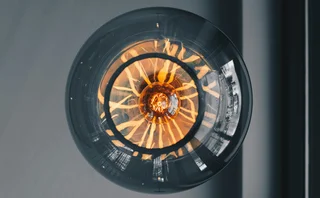Deal of the year: Intersect Power
Energy Risk Awards 2025: Clean energy company secures significant BESS financing amid market volatility

Battery storage deployment more than doubled year-on-year in 2023, according to the International Energy Agency, but it must continue to increase by 25% annually between now and 2030 to meet Paris Agreement targets. As such, financing the development of storage assets will be a crucial enabler of the transition to net zero.
Intersect Power has won Energy Risk’s 2025 Deal of the year after closing two significant Battery Energy Storage System (BESS) financing transactions in July 2024. These deals secured $837 million in commitments for the construction and operation of three standalone BESS in Texas. The company worked with Morgan Stanley as a tax equity investor, HPS Investment Partners, which was a construction and term debt investor, and Deutsche Bank, which was also involved in the construction debt, as well as providing the operational letters of credit for the projects.
The BESS will function as both load and generators, storing excess energy when demand is low and discharging it during peak periods. Each site is expected to provide 320 megawatt hours (MWh) of battery storage with a two-hour duration. These deals bring Intersect Power’s Texas fleet to nearly 1GWh of battery storage, while the company’s total battery capacity will now be 2.4GWh – among the largest in the US.
The financings were completed amid a particularly challenging landscape for renewable energy deals, given the recent higher interest rate environment. The project was also technically complex because the storage is being integrated with existing solar infrastructure. Complex tax regulations and recent volatility in Texas’s ERCOT power market added to the challenges that Intersect’s project finance team had to manage.
“This project was a quasi-merchant battery project in an incredibly volatile ERCOT market at a time when [renewable energy project] supply chains are still a little bit upside down,” says Sheldon Kimber, founder and chief executive of Intersect Power. “There also haven’t been many [deals completed] with this kind of tax credit structure. But [the asset] was built in record time and the financing was secured in less than three quarters.”
Intersect currently manages around $4 billion in energy assets but is breaking ground on a further $9 billion in 2025 and has plans for a similar amount in 2026, according to Kimber.
Wider industry understanding of the operational parameters and integration capabilities of battery technology is still developing, he says, but the company can be flexible in how it finances and manages such assets in the future. “We are prepared to build a more merchant fleet, managing it using our trading team, but we are also prepared to [strike longer-term deals] with utilities and corporates if there is demand [for this kind of power],” Kimber says.
Regardless, he expects power demand to continue growing in line with the boom in digital power applications such as data centres and artificial intelligence, as well as advanced manufacturing and green steel production. Battery storage will play a key role in supporting this growth by balancing out the intermittency of renewable energy generation.
In December 2024, Intersect announced a roughly $800 million funding round led by TPG Rise Climate and Google as part of a strategic partnership to co-locate data centres and clean power generation. The partnership’s first project is expected to be operational by 2026. Kimber believes Intersect’s recent BESS financing deals provide a robust template, as the industry looks to secure more of these battery storage financing deals to satisfy growing power demand from new technology.
“Even [industry participants] underestimate the complexity of the systems required to integrate generation and battery storage and run them smoothly and efficiently,” he says. “Our experience working on the technical and commercial structures needed to integrate batteries with solar and wind power is pretty unique and presents us with an opportunity to provide value to [hyperscalers] and AI data centres. Solving the integration problem is going to be the secret to powering those assets.”
More on Awards
Environmental products house of the year: ENGIE
Energy giant signs raft of forward-thinking environmental deals in Apac
Newcomer of the year: Marex
Commodities and financial services firm expands rapidly across Apac region, entering multiple new markets
Voluntary carbon markets house of the year: Marex
Marex’s support of mangrove projects provides high-quality credits for clients and socio-economic benefits for local communities
OTC trading platform of the year: Marex
Marex’s Agile platform registers impressive volume and client growth in Asia
Technology advisory firm of the year: KWA Analytics
With a focus on strategy and scalability, KWA Analytics improves clients’ operations in Japanese power, biofuels and certificates
Commodities technology house of the year: Topaz Technology
Strong revenue growth, Asia focus and a unique approach to unifying physical and financial risk
Electricity house of the year: Provincial Electricity Authority (PEA)
Power company uses renewables to help Thailand attract energy-intensive manufacturers amid recent geopolitical shifts
Energy Risk Asia Awards 2025: the winners
Winning firms showcase the value of prudent risk management amid challenging market conditions







